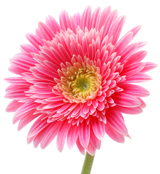Botany related pages:
- Botany
- Taxonomy
- Cell Fractionation
- Tracer Techniques
- Herbarium
- Plant Kingdom Classification
- Virus
- Structure of Virus
- Viral Infection
- Viral Replication
- Bacteria
- Classification of Bacteria
- Bacterial Cell Structure
- Reproduction of Bacteria
- Helpful Bacteria
- Others Helpful Bacteria
- Fungi
- Classification of Fungi
- Uses of Fungi
- Algae
- Red Algae
- Brown Algae
- Green Algae
- Economic Importance of Algae
- Lichens
- Moss Plant
- Non flowering Plants
- Plant Growth
- Plant Growth Regulators
- Macronutrients for Plants
- Micronutrients in plants
- Plant Movement
- Plant Tissue
- Simple tissue
- Vascular Tissue
- Vascular Bundle
- Tree roots
- Root Function
- Plant stem
- Nature of plant stem
- Function of Stem
- Stem Modifications
- Aerial Stem Modifications
- Sub Aerial Stem Modification
- Tree Leaves
- Anatomy of Leaf
- Chloroplast
- Chlorophyll
- Plant Fertilization
- Pollination
- Cross-pollination
- Plant Breeding
- Plant water relation
- Ascent of Sap
- Transpiration
- Affecting Factors of Transpiration
- Types of Fruits
- Seed Structure
- Seed Germination
- Types of germination
- Dispersal of Seeds
- Types of Flowers
- Flower Parts
- Floral Diagram
- Calyx
- Corolla
- Inflorescence
- Minerals Nutrition
- Auxin
Petals are distinctly modified leaves that surround the reproductive parts of flowers. They are often brightly colored or unusually shaped to attract pollinators such as insects, bees etc. Together, all of the petals of a flower are called a corolla. The second accessory whorl remaining next to the calyx of the flower is called Corolla.
Classification of Corolla
The corolla can be classified on the basis of shape and size and also on the basis of union.
On the basis of shape and size :
i) Regular : When the petals of the corolla have similar size and shape, they are called regular or actinomorphic, e.g. Datura, gourd.
ii) Irregular : The petals of the corolla are different in nature, which are called irregular or zygomorphic in nature, e.g. pea.
On the basis of union :
i) Polypetalous :The petals remain free from each other, e.g., mustard.
ii) Gamoptalous : The petals are united to form a tube-like structure called corolla tube. The upper part of the petals is free, called corolla lobe. The basal part of the corolla tube is called throat. There are some appendages like hairs and scales rising from the inner wall of throat, called corona.
Structural forms of corolla
There are four major types on the basis of form and union and they are as follows:
Regular Polypetalous corolla:
They are of the following types:
i) Cruciform corolla: The four similar petals which are free; distinctly differentiated into upper broad limb and lower, narrow claw. They are arranged at right angles to each other in the form of a diagonal cross, e.g., mustard.
ii) Rosaceous corolla : There are five free similar petals, with a wide limb and short claw, spreading outwardly, e.g., rose.
iii) Caryophyllaceous corolla : There are five free similar clawed petals, where the limbs are placed at right angles to the claws, e.g., pink.
Irregular Polypetalous corolla :
i) Paplionaceous : There are five free petals, which are irregular in shape. The fifth one is posterior in position and largest in size and called standard or vexillum. The two lateral petals are clawed wing or alae, the two anterior petals are united to form boat-shaped structure called keel or carina.
Regular Gamopetalous corolla :
i) Tubular : The regular, united petals, which forms a cylindrical tubular corolla without spreading limbs, e.g., Disc florets of sunflower.
ii) Campanulate : The petals are regular, united to form a bell-shaped corolla, basal part is narrow and increasingly spreads and widens at the top to form a bell-shaped structure, e.g., gourd.
iii) Infundibuliform : The regular petals are united to form a funnel-shaped structure, with a slim base and wider apex, e.g., Datura.
iv) Rotate or wheel shaped : The petals are regular, united to form a short corolla tube with a spreading wheel-shaped limb, e.g., brinjal.
v) Hypocratariform or Salver-shaped : The regular, united petals forming a narrow, long tube with a broad spreading limb, placed at right angles to it. e.g., Ixora ; Catharanthus.
vi) Urn-shaped or Urceolate : The regular petals united to form a structure, which is broad at the centre and tapering at the basal and apical end. e.g., Bryophyllum.
Irregular Gamopetalous corolla :
i) Bilabiate: The irregular corolla lobe form a two-lipped structure with a scattering mouth. The upper lip consists of two united petals, while the lower lip consists of three united petals and the mouth remains open at the throat, e.g., Leonurua.
ii) Personate or Masked : The corolla is formed of five irregular petals united to form a bilabiate structure, but the lips are very closely placed, which almost encloses the mouth. Moreover, the throat of the corolla is closed by the outcrop of the lower lip known as palate, e.g.. Antirrhinum (Snapdragon).
iii) Ligulate or Strap-shaped : The corolla is formed of five irregular united petals, which appear like a narrow tube with an upper, flattened, expanded portion forming a human tongue like structure, as an example the Ray florets of sunflower.


